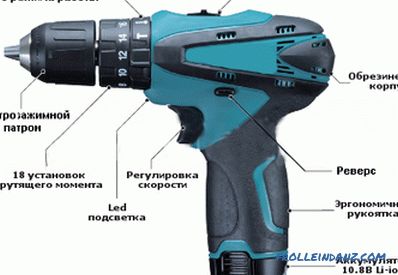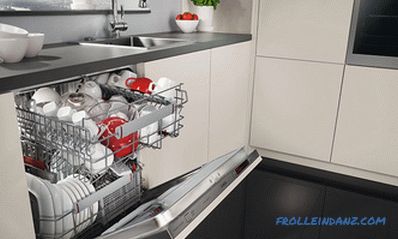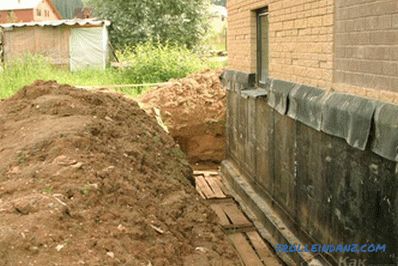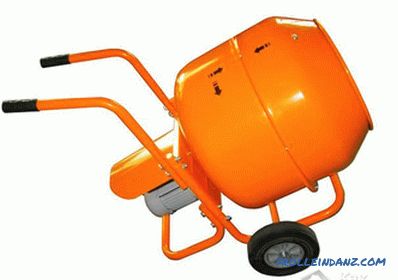Convector-type wall heaters have become very popular today. They not only work very quietly and do not take up much space, but also look very aesthetically pleasing. However, they are not only beautiful and compact, but also effective. These devices are perfect for the apartment, and for the office. We hope that this article will answer all questions about how to choose a convector heater correctly, taking into account all the necessary characteristics of it.

How does a convector heater work?
The device is based on the fact that hot and cold air have different densities. Therefore, heavier air with low temperature accumulates closer to the floor, and warm air, like lighter, soars up to the ceiling. In the case of any convector there are two slots: one at the top, the other - at the bottom. They are designed for the passage of air of different temperatures. So the operation of the device is simple: through the lower slot, cold air enters the device, heats up with the help of the heater, it becomes easier, passes the upper slot and turns out to be under the ceiling.
This type of heater has a simple construction. Inside the metal case, which has a small width, placed the heating element, working from the mains. The heating temperature is controlled by a thermostat, the knob of which is located on the outer panel. For the case metal is used 0.8 millimeters thick. That is, in fact, we looked at how a convector heater works. There are three types of heating elements for these heaters. Each of them will be described below.
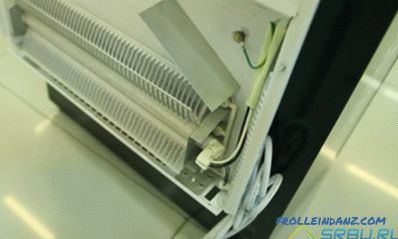
Disassembled electric convector and its heating element.
1. The heating element of the tape (otherwise, needle) type is a dielectric plate of small width, on both sides of which there are loops of an alloy of chromium and nickel. These loops can be easily damaged, as they are very brittle. Therefore, now manufacturers have practically abandoned the manufacture of such heating elements. Moreover, they heat the air too slowly due to the lack of ribs. Here the body of the device heats up, and after it the warm air moves.
2. The heating element of the tubular type (otherwise, the heating element) has been deservedly recognized as the most popular for several decades. On the heater tube, along its entire length, are ribs made of aluminum. The more of them and the more often they are located, the higher the heat transfer.
+ Teng advantages:
- The tube has a temperature much lower than the nichrome thread hidden inside it.
- The heating element serves for a long time — longer than a strip heater.
- Such a heater can work in rooms where the humidity is very high. In this case, the protection class is IP24.
- Cons of the ten:
- When working, you often hear a little annoying crackling. This is due to the difference in temperature expansion of the aluminum plates and the steel tube.
- There is a space between the aluminum plates, which are the fins, and the steel tube, which increases with time. This leads to loss of heat.
3. There is another type of heaters - monolithic. They are designed differently. The same nichrome filament is housed in a cast aluminum casing with fins, and a dielectric backfill is used to isolate them from each other. Here, if there are heat losses, they are observed, then they are minimal, because the difference in temperature expansion no longer exists. These heating elements are good for everyone: both the quiet and the instrument case heat little, and practically do not lose heat.
Since the device case is hollow inside, it serves as a kind of wind tunnel, in which thrust is created by heating the air. While the convector is connected to the network, the process of passing cold air through the heating element, its heating and upward flow continuously occurs. And so, portion by portion, the whole room air is gradually heated.
Convectors today come in a wide variety of designs.
So, they are made:
- of the floor type;
- of the wall type;
- of the baseboard type.
The first two models can be up to forty-five centimeters high. The latter are much lower - only up to twenty centimeters high, but they have an impressive length - sometimes up to two and a half meters. Reflecting on how to choose an electric convector for installation under a window opening, it makes sense to dwell on a similar model. Due to the large length, moving them is not very convenient, but you can know for sure that the air in the lower part of the room will be heated thoroughly.
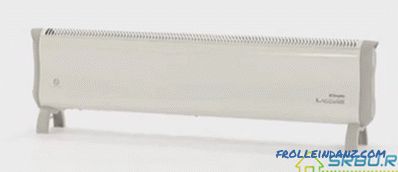
The appearance of the baseboard type convector.
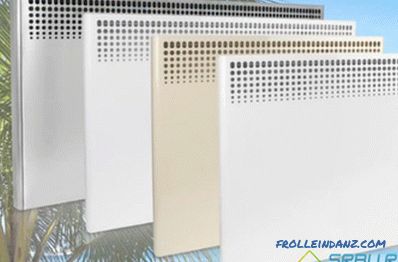
Wall mounted electric convectors.
Convectors are installed in two ways:
- on the floor
- on the wall.
They have wheels and a handle for moving on the floor. But on the wall heaters are attached with special brackets. Due to this, wall models do not take up extra space in the room at all. In addition, they can well fit into the modern interior design.
Video: About the advantages of electric convectors
Tips for choosing a convector
When choosing a convector heater, we take into account its following characteristics:
- Power consumption;
- Type of heating element;
- Device dimensions;
- Operating safety;
- Additional features;
- Cost;
- Manufacturer;
- Indicators during inspection.
1. So, power. It is selected based on the size of the room to be heated. For example, if it is supposed to use the device in addition to heating in the period when it is not yet heated or no longer heated, then we expect power as follows: for every cubic meter of room volume, 25 watts of power are needed. But if there is no heating at all in the house, then it will be necessary to calculate, based on 40 watts per cubic meter.
Let us give an example: if the area of a room is 19 square meters, the ceilings are 2.7 tenths of a meter, we consider the heater power in the off-season by multiplying these two values by 25. We get 1285 5 watts Round up and look for a heater with a power of one and a half kilowatt.
2. Type of heating element. As for the heating element, then if there is a choice, take a heater with a cast monolithic heater - it will last longer and work more efficiently.
3. Dimensions of the device. When inspecting a device, pay attention to its size, especially its height. After all, it depends on it how fast the air will move. For example, low convectors with a height of only 60 centimeters can provide very fast movement of air masses and, accordingly, heat the room faster. It is also important how heavy the device is - after all, you may have to move it from place to place during use.
4. Safety of operation. The heater should be as safe as possible. As a matter of fact, convectors are the safest devices for heating. After all, their body is heated only degrees to 60, no more, and therefore will not leave burns. Parents of young children, talking among themselves, how to choose heaters convectors, prefer models in which the body is devoid of corners and has smooth contours. Grounding for convectors is not necessary, and they withstand the voltage drops with honor.
5. Additional features. Of the extra features that a good convector has, you can note the following:
- The temperature controller is a very handy thing. If it's warm outside, you can fasten it a little, and in case of severe frost, set it to maximum.
- The thermostat will allow you to constantly maintain the temperature in the room that is most comfortable for you.
- The timer will give the opportunity to turn on the heater for a certain time, after which the shutdown device will work. This opportunity to use well in the evening, before bedtime.
- The built-in ionizer absorbs dust, saturating the air with negative ions. It is very good for health. In a room with such a microclimate, it sleeps better and works more productively.
- The remote control and the start-up timer will allow you not to get out of the warm blanket in the morning to heat the room.
- Protection against overturning is a very important function, especially if there are playful animals or fidget children in the house.
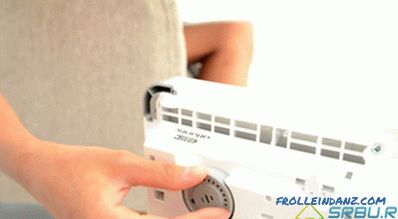
Mechanical control system.

Convector with electronic control system
6. Looking at the price of the device and deciding which firm to choose a convector, keep in mind that a cheap thing cannot be cheap. After all, we all want the heater to be efficient and safe, work for a long time and have a normal warranty service. Therefore, when choosing a device, turn your eyes towards well-known brands, whose guarantee is not just empty words. They are really responsible for the quality of their products, which have been produced for a long time and successfully sell them on the world market.
7. Visual inspection. When inspecting a convector offered by a seller in a store, look at it well for scratches or dents. Inadmissible paint stains, distortions of the hull, notches and sharp edges. Screws and bolts should not protrude from the housing. If something you did not like or seemed suspicious, it is better not to take such a heater. After all, it says either a bad build or a careless shipment.
Remember the following three rules:
Each convector-type heater will dry the air in the room. The other is simply not given, according to the principle of work. The maximum that can help: a container of water for evaporation.
As the air constantly moves in the process of convection, dust will move with it. Over time, it will accumulate between the plates. If a deceitful salesman tells you that "only this model" of the convector does not accumulate dust, do not listen to these fables and call another consultant.
Any electric heater has an efficiency close to 100 percent. Therefore, do not believe that only this model, which is persistently imposed by the seller, can provide such efficiency.
Installing the heater and starting operation
When you mount the convector frame or the legs with the wheels on the wall, carefully follow the instructions - everything is described there. Observe the necessary distances: the heater from the floor (that is, the lower edge of its body) should be no closer than 15 centimeters, and no closer than 25 centimeters from the wall or any object. As for the upper edge of the device, there should be nothing above 45 centimeters above it.
If you ignore these rules or close the top slot with something, the case will quickly overheat, the protection will activate and turn off the device. So in no case do not try to put a tall device under the window, do not dry things on its surface and do not cover its upper part with anything. If you do not know how to choose an electric convector under the window opening, it is best to get a low, so-called "baseboard" model.
It is easy to care for this type of heater - you only need to wipe its external panels from time to time with a damp cloth. Naturally, this is done when the device is turned off. Before this, check whether the body is cool enough. To remove accumulated dust from the heater, take a vacuum cleaner equipped with a short, narrow nozzle, and thoroughly clean the heating element.
Table of technical characteristics and main selection criteria for electric convector heater
| Parameters | Values | Recommendations for Select |
|---|---|---|
| Power | From 250 to 3000 W | To reheat 25 W per 1 m 3 For main heating 40 W per 1 m 3 |
| Heating area | From 1 to 35 m 2 | Too large rooms can be difficult to heat. |
| Type of heating element | Tape type, Teng, Monolithic | It is better to give preference to monolithic The first heating element |
| Installation type | Floor-standing, Wall-mounted | If it is used continuously in one room only, you can give Preference for wall-mounted |
| Control | Mechanical, Electronic, Touch | Touch is rare. |
| Thermostat | Electronic, Mechanical | It is better to prefer electronic |
| Timer | Availability depends on model | It is better to choose a model with a timer |
| Built-in ionizer | Availability depends on model | It is better to give preference to the model with ionizer |
| Remote control | The availability depends on the model | The availability of the kit is very convenient |
| Protection against overturning | Availability depends on the model | The presence of such protection in floor convectors is very important especially if there are small children or animals in the house |
| Height | Up to 65 cm | The smaller the faster the room warms up |
| Long | Up to 250 Cm | Long baseboard convectors are able to quickly and thoroughly warm the room, especially in its lower part. |
Video: How to choose a convector heaters
